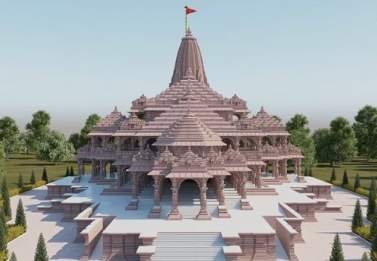
Ram Mandir: A Masterpiece of Nagara Architecture & Beauty

The Ram Mandir in Ayodhya showcases architectural elements rooted in the Nagara style, a traditional temple architecture prevalent in northern India. Here are key aspects of the temple’s design:
- Standing at a height of 161 feet, with a length of 380 feet (east-west) and a width of 250 feet, the temple adheres to the traditional Nagara style.
- The temple features a lofty pyramid-shaped Shikhara tower positioned above the Garbhagriha, housing the idol of Ram Lalla. Crowned with a Kalash—a metal pot adorned with a coconut and mango leaves—the Shikhara adds a distinctive touch to the structure.
- Comprising seven temples in total, with a central temple and six smaller ones surrounding it, the complex incorporates five Mandapas (halls) within the central temple, each serving distinct purposes.
- Crafted exclusively from stone, the temple avoids the use of iron or steel. The stones bear intricate carvings and motifs depicting scenes from the Ramayana and other Hindu scriptures.
- The temple’s construction includes forty-eight gates and three hundred and ninety-two pillars on each floor, all standing at a height of 20 feet. Adorned with carvings and sculptures, these pillars showcase various deities and animals.






